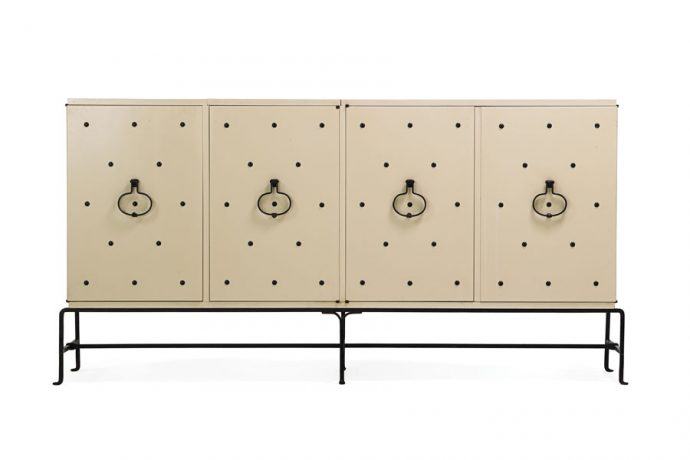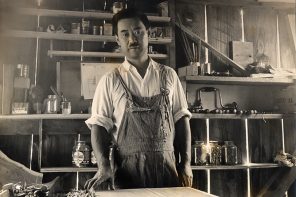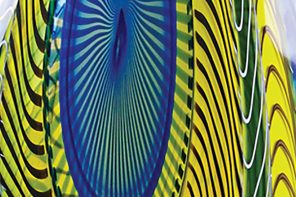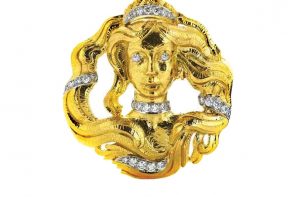The elegant designs of Tommi Parzinger are a familiar sight in my travels to the homes of Westchester and Fairfield county clients. Parzinger was a talented designer and artist who created both custom and commercial furniture, textiles, lighting and metalwork. His work, which appears regularly at auction, is classified as high-style Modernism, and its heyday was in the 1950s and ’60s.
German-born Tommi Anton Parzinger (1903-81) shared his sculptor father’s aptitude for art. At Munich’s School of Applied Arts, Parzinger studied a variety of decorative and graphic arts and soon gained recognition for his poster designs. In the early 1930s, he immigrated to the United States and settled in New York. He worked first for Rena Rosenthal, whose trendsetting Madison Avenue shop did much to promote Modernism to American audiences. By 1939, he had established his own firm, Parzinger Inc. — the same year that he also exhibited at the World’s Fair. His New York City showroom, which was later renamed Parzinger Originals, supplied custom furniture, metalwork and lighting to decorators such as Billy Baldwin and prominent clients, including Marilyn Monroe, and the DuPont, Ford and Mellon families.
In addition to his studio work, Parzinger designed commercial lines intended for more mainstream consumption. Parzinger’s name is associated with a number of companies, such as Charak Modern, a firm known up to that point for traditional furniture. He produced lighting for Lightolier, brass and silver plate accessories for Dorlyn Silversmiths and Mueck-Cary and fabrics for F. Schumacher. At his peak of production, Parzinger churned out a dozen to 30 designs each year.
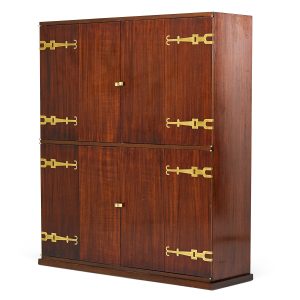
Toward the end of his life, Parzinger stopped designing furniture and devoted his energies to Expressionist painting. The showroom closed shortly after Parzinger’s death in 1981, and the business was inherited by his life partner, Donald Cameron, who had overseen production and contributed designs for the firm. At the turn of this century, Cameron gifted a trove of Parzinger’s designs and interior drawings to the Cooper Hewitt, Smithsonian Design Museum. He also reissued some designs with the dealer Patricia Palumbo, which led to a burgeoning interest and a new appreciation of Parzinger’s work.
Parzinger’s furniture is invariably described as refined, stylish, elegant and luxurious. In 1957, The New York Times noted “Mr. Parzinger’s furniture has a style all its own — a jewel-like quality in finish and metallic ornament that gives a precious, one-of-a-kind look to simple modern shapes. While a roomful of his designs is delightful, just one of his pieces can do for a simple room setting what a diamond clip does for the basic black dress.”
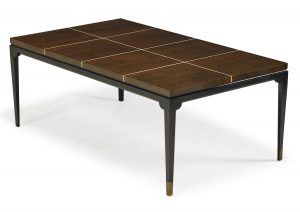
The furniture was crafted with great care and used costly materials. While his work relied on simple geometry and was steeped in classicism, he modernized his designs by using colorful lacquer finishes — yellow, salmon, black and white — or tooled leather or wood veneers with contrasting inlay. His exaggerated use of latches and handles, decorative brasses and studding are hallmarks of his furniture style. Many of Parzinger’s designs are branded Parzinger Originals, although some pieces are unsigned. His commercial furniture is stamped Charak Modern.
In lighting, Parzinger designed a broad selection of table and floor lamps, sconces and chandeliers, working in mahogany, lacquer, wrought iron, brass and nickel silver and embellishing the works with radiating lines and leafy flourishes. His most impressive chandelier evokes a crown.
Parzinger’s early silverwork is associated with the silversmith Peter Reimes. It shows an affinity for engraved decoration and depicts classical subject matter but rarely appears on the market. Far more common are his works in brass or silver plate, many designed for Dorlyn Silversmiths. These designs do not stray far from other American firms working in the Modern style.
Enthusiasm and prices for Parzinger’s work were stronger in the early 2000s when a few dedicated dealers were championing his work, and when buyers were first rediscovering Parzinger. Jad Attal, Rago’s Modern specialist, notes that the silver lining is that prices are now more approachable. For example, an elegant inlaid mahogany Parzinger Original dining table will fall in the $3,000 range at auction, commanding slightly more than a Charak Modern model. The most desirable Parizinger pieces are his iconic lacquered, carved or tooled leather cabinets, which can range from a few thousand dollars to well over $20,000, depending on condition and design.
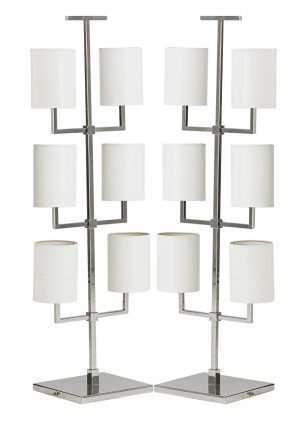
In lighting, the mahogany, lacquered, silver-plated and brass fixtures command more than wrought-iron pieces. A pair of floor lamps can range from $1,500 to $10,000. In metalwork, brass models are less desirable that those with a silvered finish, and some pieces can be had for a few hundred dollars. As always, an important provenance will produce a strong auction result, as with the Sylvia Hoffman Collection, which sold at Rago in 2015. Hoffman was a longtime member of the Parzinger firm and her collection included a rare fish-form table lamp, which commanded $20,000 against an estimate of $3,000-$5,000, showing that all bets are off when something rare and unexpected comes to the market.
Jennifer Pitman, a Westchester resident, writes about the jewelry, fine and decorative arts she encounters as Rago Arts and Auction’s senior account manager for Westchester and Connecticut. For more, contact her at jenny@ragoarts.com or 917-745-2730.

